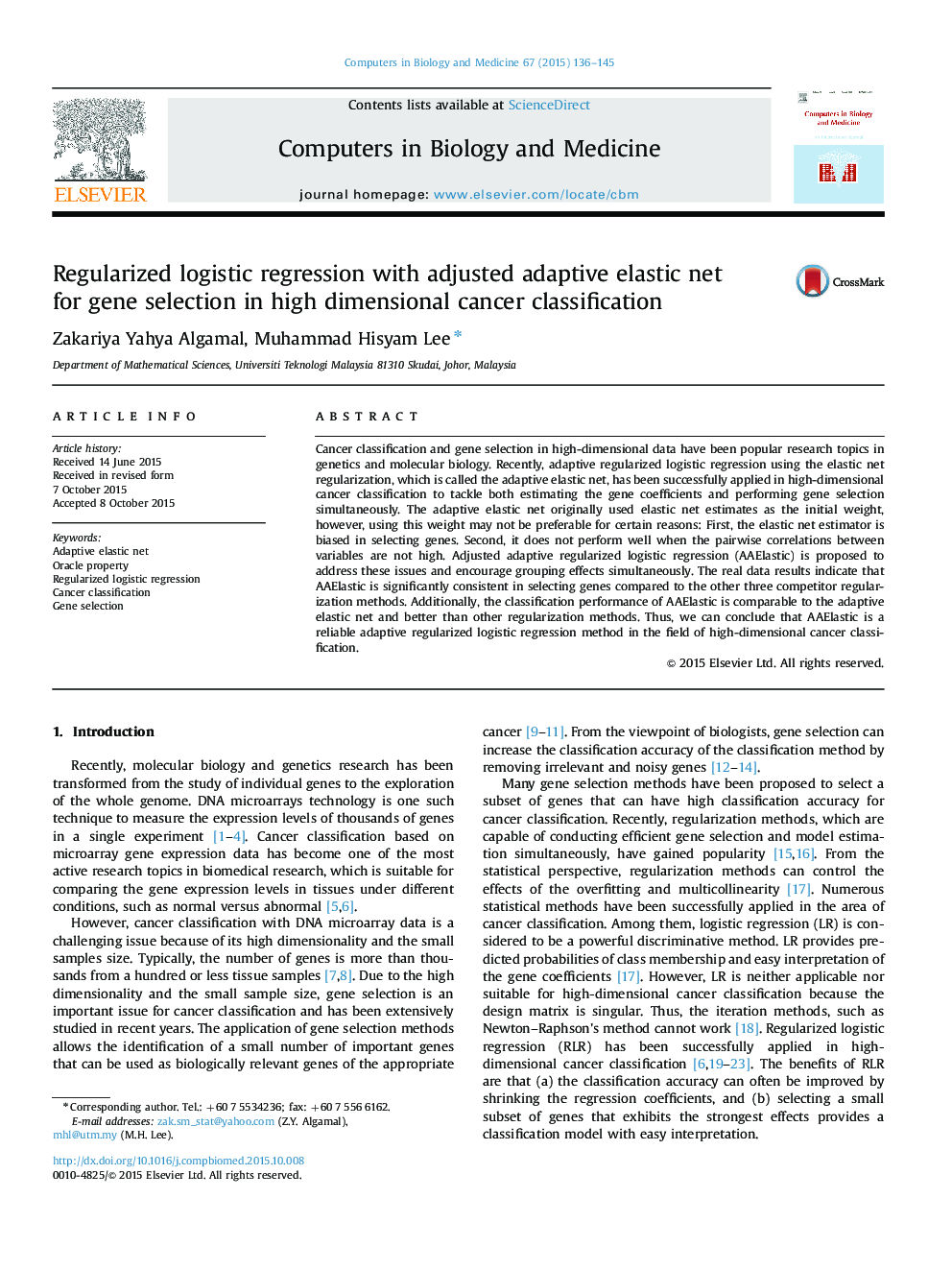| Article ID | Journal | Published Year | Pages | File Type |
|---|---|---|---|---|
| 504855 | Computers in Biology and Medicine | 2015 | 10 Pages |
•The AAElastic showed superior results in terms all evaluation criteria.•The AAElastic selected more correlated genes than the other methods.•The AAElastic performed remarkably well in classification stability test.•In terms of gene selection consistency, AAElastic significantly performed well.
Cancer classification and gene selection in high-dimensional data have been popular research topics in genetics and molecular biology. Recently, adaptive regularized logistic regression using the elastic net regularization, which is called the adaptive elastic net, has been successfully applied in high-dimensional cancer classification to tackle both estimating the gene coefficients and performing gene selection simultaneously. The adaptive elastic net originally used elastic net estimates as the initial weight, however, using this weight may not be preferable for certain reasons: First, the elastic net estimator is biased in selecting genes. Second, it does not perform well when the pairwise correlations between variables are not high. Adjusted adaptive regularized logistic regression (AAElastic) is proposed to address these issues and encourage grouping effects simultaneously. The real data results indicate that AAElastic is significantly consistent in selecting genes compared to the other three competitor regularization methods. Additionally, the classification performance of AAElastic is comparable to the adaptive elastic net and better than other regularization methods. Thus, we can conclude that AAElastic is a reliable adaptive regularized logistic regression method in the field of high-dimensional cancer classification.
